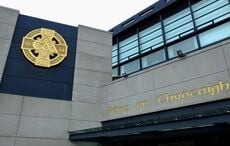An inquest into the death of a Co. Dublin man in Oregon last year was opened and then adjourned in Dublin last week.
The Dublin county coroner, Dr. Kieran Geraghty, opened the inquest into Andrew Hanlon’s death Tuesday morning, March 3, but said that state pathologist Dr. Marie Cassidy was unable to attend and, as she is regarded as a crucial witness, the inquest was adjourned until March 19.
Hanlon, 20, was shot dead last June by a police officer in the town of Silverton, south of Portland.
Hanlon, who was unarmed, was shot a number of times by police officer Tony Gonzalez after a frantic 911 call from a woman claiming he was trying to break into her house.
A grand jury investigation at the end of July cleared Gonzalez, 35, of wrongdoing, citing a “lawful use of deadly physical force”.
Hanlon, known to his friends and family as A.J., moved to Silverton to his sister Melanie and her husband, Nathan Heise, in 2007. Soon after his arrival, the family discovered Hanlon had some psychological issues and tried to get him into a program but, according to Heise, Hanlon refused to acknowledge his problems.
According to the police report, Hanlon, 5’6”, began knocking on the door of a blue farmhouse about 11:20 p.m. on Monday, June 30. The woman of the house, Shannon Kelley, became frightened when a young male aggressively pounded on her front door. She asked him to leave but Hanlon refused and began leaping at the door, said the report.
Kelley then called the police in a panic. Police later discovered Hanlon’s blood and skin on the door’s white surface. The report said that Hanlon told Kelley he was the “angel of death” and he howled at the moon.
According to Heise, Andrew had a habit of banging on their front door at night. Heise thought Hanlon may have been confused as to where he was. The shooting took place four blocks from the Heise home.
Hanlon left Kelly’s house and climbed a tree near a home down the hill. It was there that Gonzalez, a former Marine and cage fighter, discovered Hanlon.
Moments later, Hanlon descended from the tree but ran from Gonzalez. The officer said he heard the sound of glass breaking.
Assuming Hanlon had a broken glass on him, Gonzalez drew his gun and ordered Hanlon to show his hands. Police later discovered that Hanlon did not have a weapon in his possession. It was then assumed that the young man must have bumped off a recycling bin.
According to an eyewitness, a resident in the area, Gonzalez kept shouting, “Get down” and “Freeze.”
The grand jury heard that Hanlon screamed, swung his arms and legs and leapt aggressively towards Gonzalez.
Gonzalez backed across the street, about 25 feet but Hanlon followed, staying within five feet of the police officer. Gonzalez fired his gun as he moved away. Hanlon was shot five times and died instantly.
“Upon seeing Andrew Hanlon, Tony Gonzalez did not draw his service weapon, rather he ordered him to come down and to show him his hands,” said the district attorney’s press release.
Toxicology reports show Hanlon did not have alcohol or drugs in his system.
After the grand jury ruling, Hanlon’s sister Melanie said that although she acknowledged that her brother was disturbed and perhaps even agitated on that night, she questioned why a confrontation between law enforcement officials and a person with mental illness always ends up with the person with the mental illness dead.
“In Andrew’s name, I will commit myself to solving this problem,” she told reporters.
Hanlon’s mother Dorothea Carroll, who resides in the south of France, traveled to Silverton following the shooting to bring her son’s body back to his native Ireland. Hanlon was buried in Saggart, Co. Dublin on Monday, July 21.




Comments